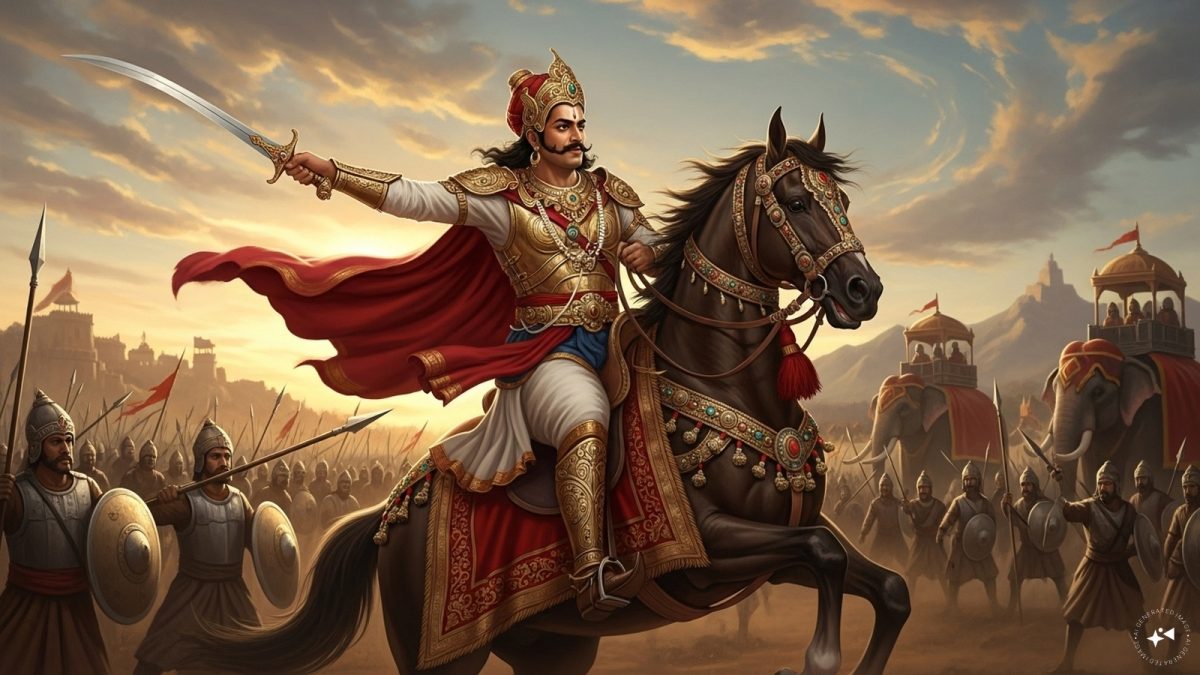August-September is that time of the year when the Jain community marks Paryushana, an annual festival that commemorates the value of forgiveness. It is a time when chants of ‘Micchami Dukkadam’ are in the air, meaning ‘may all the evil that has been done be in vain’. On this occasion, let us strike an interesting and perhaps discordant note by talking about a historical figure who is known to us both as a Jain as well as a warrior.
This odd contrast of a Jain person who was also a warrior comes to us from what was the kingdom of Kalinga, broadly conforming to the modern state of Odisha. And the figure we are going to talk about is not from recent history but dates to the 2nd century BCE period. Sources about this person are limited—actually, there is only one confirmed source, carved on rock two millennia ago.
Outside the city of Bhubaneswar are two cave complexes, Khandagiri and Udayagiri. On holidays and weekends, they are filled with visiting families. The kids look curiously at the elaborate carvings within the caves, spend a few minutes and then move on. When they grow up, they dutifully bring their kids to the caves, and then they too move on. However, those of a more questioning and adventurous disposition tend to probe the caves further. In doing so, they come across a long inscription in the Udayagiri Caves. An inscription that mentions the Jain warrior.
The indifference of the kids who come and spend just a few minutes in the caves can be attributed to the way they are taught history. It is a history which speaks of the Mauryan ruler Ashoka’s attack on Kalinga and how it supposedly altered his outlook and life. Has any history book ever spoken of the impact of that devastating attack on Kalinga? The inscription on that Udayagiri cave wall is part of the Kalinga story, and it speaks of a ruler who went back and extracted vengeance from the Mauryans.
Impact Shorts
More ShortsThis is the story of a man called Kharavela. Sometime in the second century BCE, he ascended the throne of Kalinga. The third ruler of the Mahameghavahana dynasty, he proved himself a capable military leader. In the twelfth year of his reign, taking advantage of the growing weakness of the Mauryans, he led an expedition into Magadha.
Defeating the army that faced him, he made the Mauryan King Bahasatimita bow to him. On his return, he brought back the Jain idols that had been taken away to Pataliputra by the Magadhan kings in their attacks on Kalinga. He also enabled Kalingan conquests in areas beyond Magadha.
To those who may wonder how we know so much about Kharavela, the answer is that he tells his story himself. Within the Udayagiri Cave complex is the Hathigumpha, or Elephant Cave.
Inside is a Brahmi-script inscription that stretches to 17 lines of words, each line representing events of one year of Kharavela’s reign. Sadly, with 13 out of the 17 lines having suffered some damage over time, there is much about Kharavela’s story that remains obscure and keeps historians occupied in speculation.
The significance of the Hathigumpha Inscription, as historians call it, cannot be underestimated. Without it, no one would ever have known of the attack of the Kalingans on Magadha. Despite all the doubts about aspects of the inscriptions, it is evidence that Kalinga had a history of its own, beyond what is written in the context of Ashoka.
Kharavela apart, the Khandagiri and Udayagiri cave complexes are outstanding depictions of the art and architecture of that era. Across thirty-three caves, originally meant as places of solitude and prayer for Jain monks, they are repositories of Kalinga’s ancient history. Some caves are double-storeyed; others have pillared porches.
There are other inscriptions too, as well as numerous intricate carvings. The Ganesha Gumpha at Udayagiri tells the story of the elopement of Bassavadatta, Princess of Ujjain, with King Udayana of Kaushambhi. Amazingly, this story is not told in words but via figures carved on stone. The Vyaghra Gumpha is shaped like the open mouth of a tiger. Home to an inscription of an ancient Kalingan city judge, this cave has now become a popular selfie spot.
Within the adjacent Khandagiri cave complex is the Barabhuji Gumpha—named for twin carved panels depicting a set of goddesses, each with twelve arms. Khandagiri also includes a Jain temple that is still functional. Relatively recent in structure, this indicates near-unbroken habitation and worship at the site as well as modifications and rebuilding activities by different rulers over centuries. The same pattern is also observed in the Navamuni Gumpha, a rough-hewn cave where a Somavanshi ruler added sculptures of nine Jain Tirthankaras and goddesses in the 11th century CE.
Back to Kharavela—the location of the mammoth inscription that tells his story is perhaps not mere coincidence. The choice of spot may have been a power statement of the Kalingan ruler. Standing in front of the Hathigumpha, a visitor can see the Dhauli hill on a clear day.
Dhauli is believed to be the site where the brutal Kalinga war was fought and is also the place where Ashokan edicts were erected. In his book ‘The Ocean of Churn’, writer Sanjeev Sanyal opined that Kharavela, by deliberate decision or chance, had found a unique way of replying to Ashoka. The Kalingan who defeated the Mauryans replied to the Mauryan who had defeated Kalinga. Regardless of the extent of his beliefs in Jain values, forgiveness was probably not on Kharavela’s mind.
The author is a heritage explorer with a penchant for seeking obscure sites. A brand consultant by profession, he tweets @HiddenHeritage. Views expressed in the above piece are personal and solely those of the author. They do not necessarily reflect Firstpost’s views.


)

)
)
)
)
)
)
)
)



